Breaking Down the Facts Around Omega-3 Supplements and Their Benefits
The world of supplements is vast, and if you’re like most people, a bit confusing and intimidating to sort through all of the information. With approximately 29,000 supplements on the market today (just in the US) and around 1,000 more added to the mix annually (also just in the US), you’d hardly be to blame. [According to the FDA]
Whether you’ve been taking supplements for years “just because” or are asking yourself whether you should be, follow our Supplement Series for an overview of the whats, whys, and whos of individual supplements. (And please read our disclaimer at the end of this post.)

What are omega-3s, and why are they important?
Omega-3s are a group of fatty acids. They are one of the two major classes of polyunsaturated fatty acids (AKA PUFAs). (The other major class is omega-6s, which we’ll get into a bit more next.) There are three main types of omega-3s: ALA (alpha-linolenic acid), EPA (eicosapentaenoic acid), and DHA (docosahexaenoic acid).
ALA is considered an essential fatty acid. If you’ve read our previous posts on vitamins D and B12, you’ll know that the word essential here means that our body can’t make it, and therefore we need to consume it (whether from foods or supplements, but more on that later).
Cell membranes, eyes, brain, heart, lungs, blood vessels, and immune and endocrine systems. What do these all have in common? You guessed it, omega-3s. More specifically, they all rely on omega-3s to function correctly. Omega-3s are also calorically dense sources of energy for your body.

What about omega-6 and omega-9?
While we’re mostly here to talk about omega-3s, they’re often talked about as part of a ratio that compares omega-3s with omega-6s. Why is this important?
According to this study, the ratio of omega-6s to omega-3s has significantly increased from how we evolved (from 1:1 to 15/16-1). A lower ratio has been linked to lower rates of inflammation and chronic conditions such as cardiovascular disease and cancer.
Omega-6s are also essential fatty acids, but consuming too much can lead to an increase in inflammation. While a ratio of 1:1 may be difficult for most to achieve, 4/1 is considered the upper limit of a healthy omega-6 to omega-3 ratio.
If you live in a western culture, you are likely consuming too much omega-6s and not enough omega-3s.
You may have seen or even purchased omega supplements that contain omega-3, omega-6, and omega-9. Some supplements choose to include omega-9 (which is not essential like omega-3 and omega-6) because omega-9 fatty acids may have health benefits such as a decreased risk of cardiovascular disease, reduced inflammation, and improved insulin sensitivity.
If you include olive oil in your diet, you consume oleic acid, one of the more popular omega-9 fatty acids. While the known benefits of The Mediterranean Diet (rich in olive oil) could be attributed to other lifestyle factors, it’s worth pointing out that not all fats, or oils, are created equal. If you want to cook with oils, choose those that have more known health benefits. And do so sparingly.
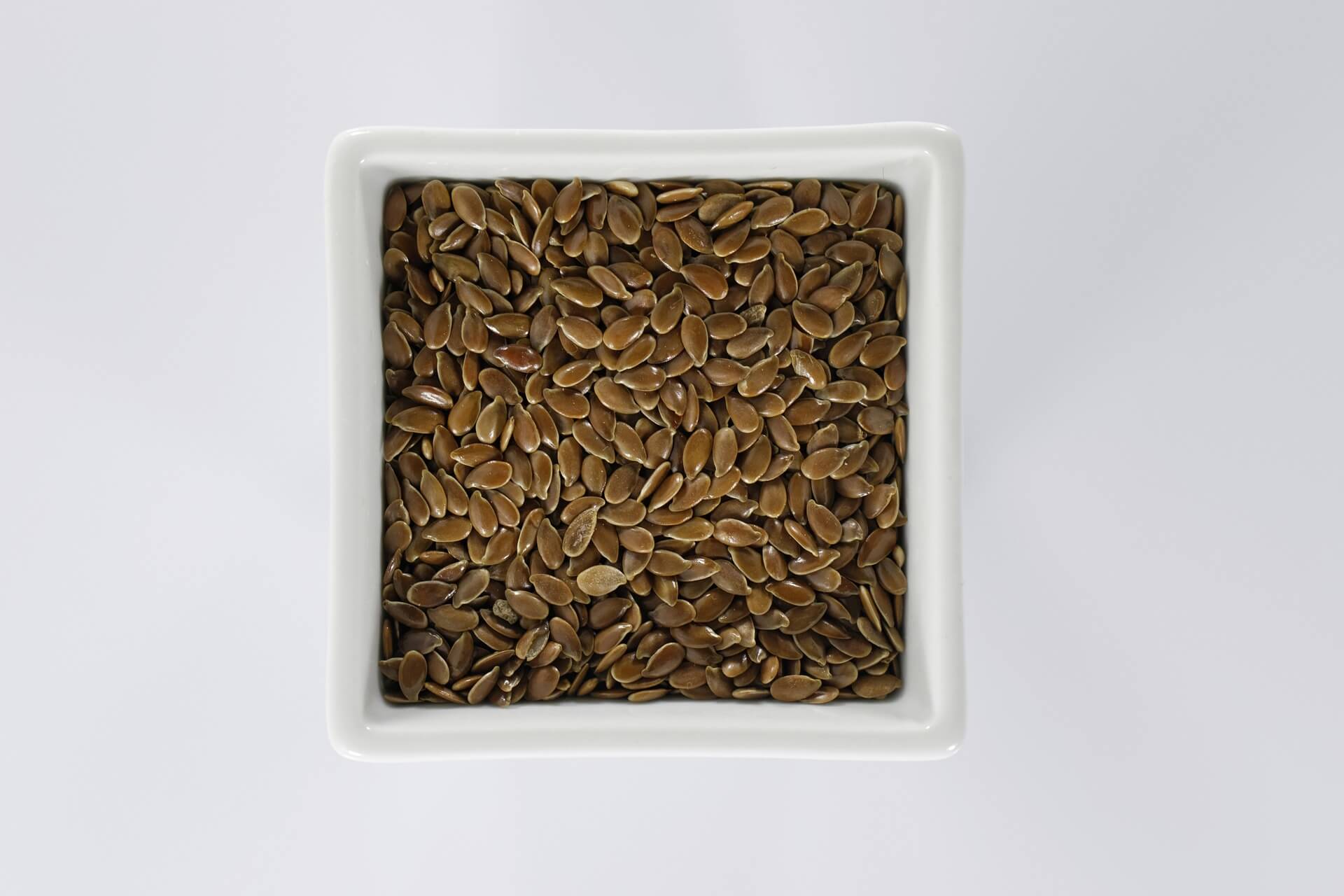
How much do I need and where can I get it?
According to the NIH (National Institutes of Health), the exact amount of omega-3s varies. See their chart below for recommendations for ALA:
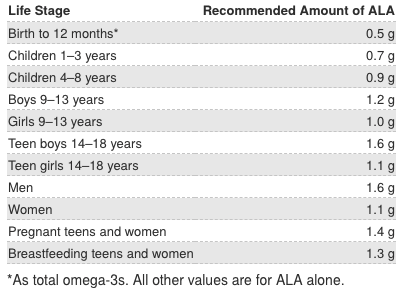
Deficiencies are rare, as most Americans obtain enough ALA from food but can cause rough skin and an itchy rash. Our bodies can also convert ALA into EPA and DHA.
Ways to improve your omega-6 to omega-3 ratio: lower omega-6 consumption, increase omega-3 consumption, or do both.
Some sources of omega-6 fatty acids (to potentially reduce):
- Soybean and corn oil
- Mayonnaise
- Sunflower seeds
- Walnuts, almonds, and cashews
- Tofu
Some sources of omega-3 fatty acids (to potential increase):
- Salmon (and other fish like mackerel and anchovies)
- Walnuts
- Chia seeds and flaxseeds
How much do you need? Well, if you’re going the food route, Dr. Michael Gregor recommends one tablespoon of ground flaxseeds every day to cover your omega-3 needs. You could easily include this in your breakfast smoothie, oatmeal, and even pancakes!
As for supplements, he recommends “250 mg daily of pollutant-free (yeast- or algae-derived) long-chain omega-3’s (EPA/DHA).”
A note for vegans and those who don’t eat fish:
As noted above, some of the best sources of omega-3s are fish. This is pretty handy for those who eat fish, but what about those who don’t? Whether you’re vegan or simply choose not to consume fish, walnuts, chia seeds, and flaxseeds are your friends.
As for supplements, choose an omega-3 supplement that is sourced from non-fish sources such as algae.
A note for those who are pregnant or breastfeeding:
Consult your healthcare provider, as they may or may not recommend that you take an omega-3 supplement or consume more (or less) foods rich in omega-3s. There are benefits and risk factors to consider and discuss.
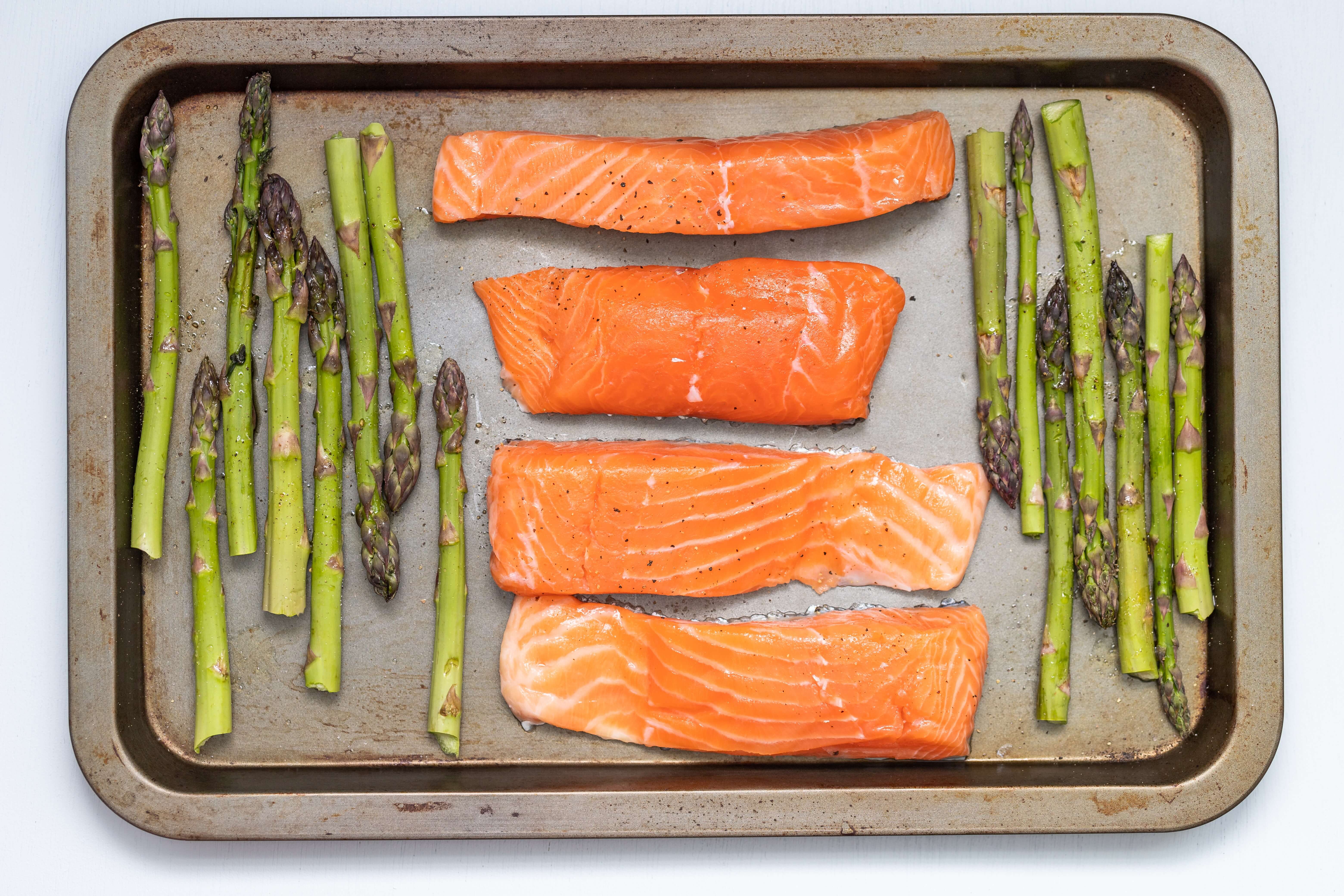
Safety: Mercury and PCBs
Pregnant or not, mercury and PCBs (polychlorinated biphenyls, a group of industrial chemicals) are a concern when consuming fish and fish products. Consuming PCBs can increase your risk of cancer as well as negatively affect fetal and infant development.
Mercury, a potent neurotoxin, can cause severe neurological effects if too much is consumed. And because mercury builds up in the fish we choose to eat, it is worth doing your research and seeking sources low in mercury.
This means that you also need to do your research and seek out supplements that have tested their PCB levels and are considered low enough for consumption. If you’re from California, this is part of Proposition 65, which you can read more about here.
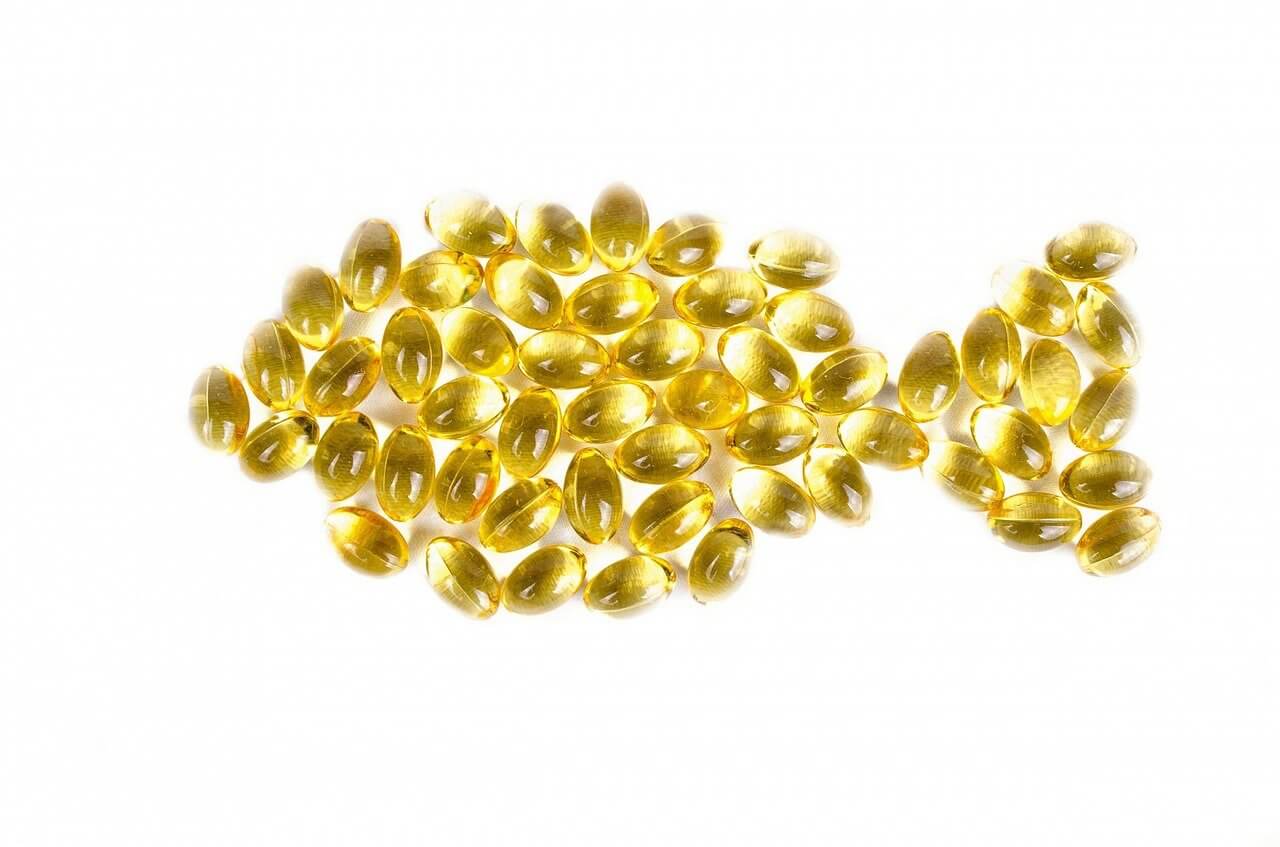
As we’ve stated before, it’s often best to consume the necessary vitamins and nutrients for your body in the form of food. However, that’s not always possible. In the case of omega-3s, you might have nut or seed allergies or simply not like the foods where you can obtain sufficient amounts of omega-3s.
Or maybe you find yourself at a time in your life, like pregnancy, where you may need a bit more than you can consume in your diet. This is where supplements can come in and make a big difference. And, as always, it’s best to know why you’re taking something beforehand. This can be done with a bit of research alongside recommendations from your healthcare provider.
If you’re ready to start taking omega-3 supplements today (or just want to switch from another brand or dose), then consider our Omega-3 Fish Oil supplement. And if you’re looking for a supplement that contains omega-3s, omega-6s, and omega-9s, then consider our Krill Oil supplement, which includes all three.
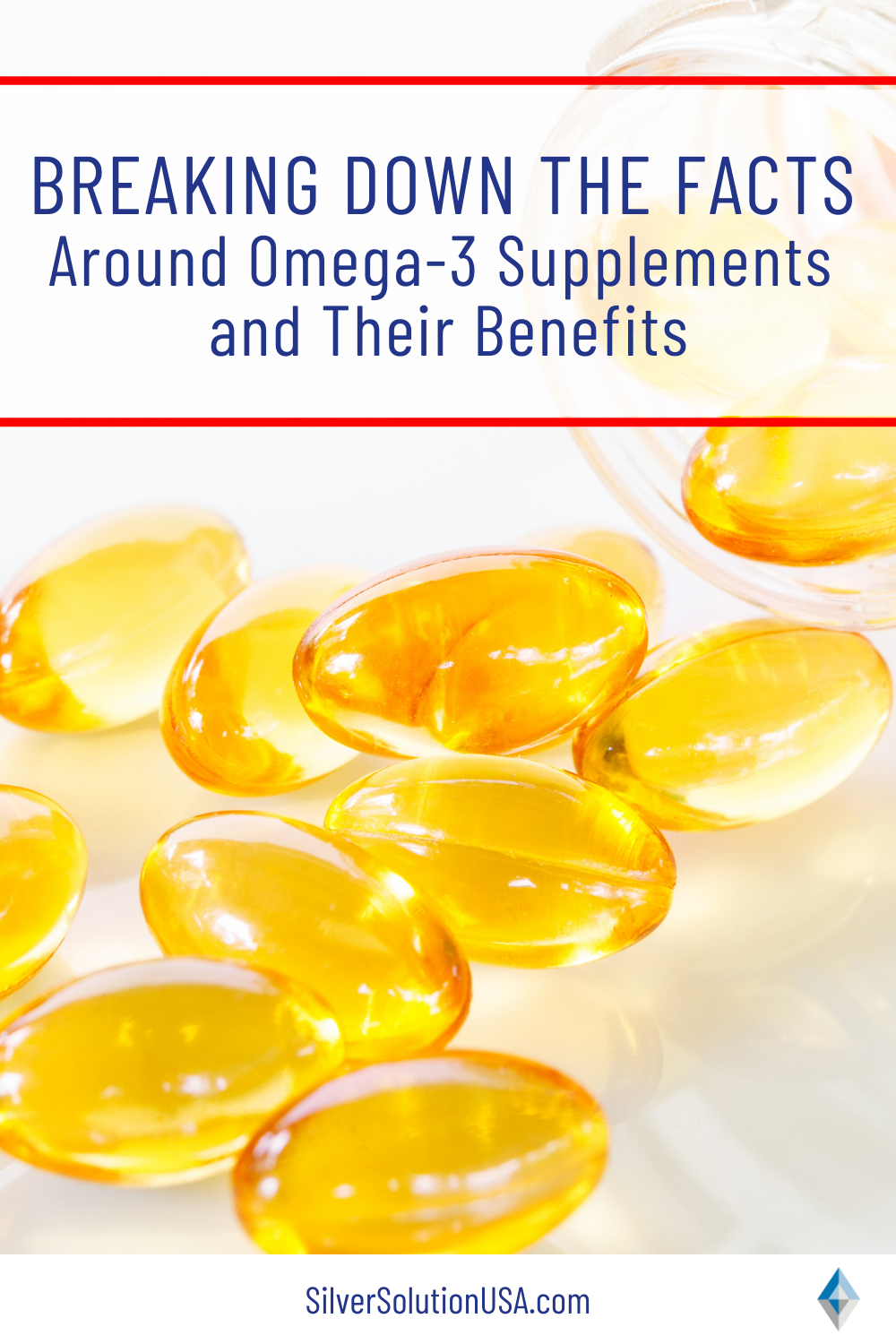
Health/Medical Disclaimer
This blog post does not provide health or medical advice. This blog post is for informational and educational purposes only and is not a substitute for professional health or medical advice. Before taking any actions based upon such information, we encourage you to consult with the appropriate medical and healthcare professionals. We do not provide any kind of health or medical advice. The use or reliance of any information contained on this blog is solely at your own risk.
Sources
https://ods.od.nih.gov/factsheets/list-all/#Omega3
https://ods.od.nih.gov/factsheets/Omega3FattyAcids-Consumer/
https://ods.od.nih.gov/factsheets/Omega3FattyAcids-HealthProfessional/
https://pubmed.ncbi.nlm.nih.gov/18408140/
https://www.healthline.com/nutrition/omega-3-6-9-overview
https://nutritionfacts.org/topics/omega-3-fatty-acids/
https://nutritionfacts.org/2011/09/12/dr-gregers-2011-optimum-nutrition-recommendations/
https://oehha.ca.gov/fish/pcbs-fish-caught-california
https://www.medicalnewstoday.com/articles/omega-6-fatty-acids
Recent Posts
-
Are sunscreen ingredients harmful?
Sunny days can bring a lot of fun. Going out for a swim, spending time in nature, or relaxing on the …18th Mar 2024 -
The Veggie Debate: Does Cooking Vegetables Destroy Nutrients and the Best Ways to Cook Them
Vegetables are one of the healthiest foods you can choose. Some people downright hate them, while so …4th Mar 2024 -
Best Foods for COVID Recovery and Prevention
A few years ago, a new virus took the world by surprise. COVID-19 may look like the flu on the surfa …19th Feb 2024




